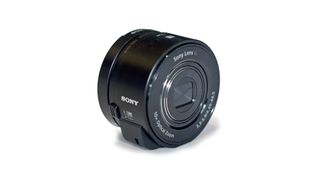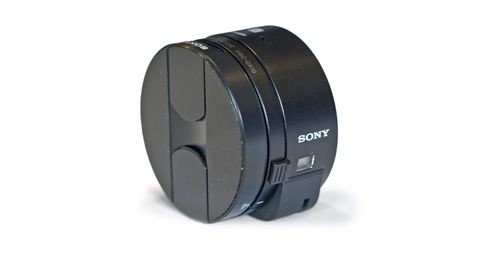Why you can trust TechRadar
We've come to expect good things from Sony's cameras, and the QX10 is no different. Colours are bright and vibrant, while detail is captured well thanks to its 18 million-pixel sensor. That's quite the step up from the majority of smartphones out there, and if you're keen to crop into your images, you should really enjoy those extra pixels.
Images appear pretty sharp, but if you examine some at 100%, there is evidence of image smoothing even at lower sensitivities. It becomes more apparent when closely examining images shot at the full telephoto zoom (280mm equivalent), but when viewing the images at small printing and web sizes, there shouldn't be any problems.

Having the optical zoom ability is what elevates the QX10 above a standard smartphone. It also offers more flexibility than the higher specced QX100, so if you're all about the zoom, this is probably the better option for you. Although there is evidence of image smoothing, the ability to get closer to the subject is good. Generally speaking image stabilisation does well at the far end of the telephoto zoom, which is useful when holding the camera separately from your smartphone or tablet as this can be a little less sturdy than when shooting two handedly.
You don't have the options to change many of the settings with the QX10, so you'll come to rely on the camera's automatic modes. In most instances it's fine to leave the camera in smart or intelligent automatic mode as it is good at evaluating the scene in front of it, for example determining when it is confronted with a low light or macro scene.
Automatic white balance and metering do a good job to provide balanced exposures with accurate colours in the majority of conditions, perhaps erring slightly towards warm tones under artificial lighting conditions. Changing to a more appropriate white balance setting is available via Program Auto, one of the few settings you can change, so it's worth switching if the camera is really struggling.
Low light shooting is also something which is often challenging for a smartphone. The QX10 with its comparatively larger sensor, along with functions such as a large sensitivity range and twilight mode, make it a good option once light levels drop. Hand held twilight mode takes a number of shots then combines to produce an image with lower noise, it works well for subjects which are still, but is less useful when attempting to photograph something moving such as a person or event.

Unfortunately, there is, for now at least, no way to use a flash with the QX10. Even those phones that do have an LED device in built, there seems to be no way of triggering it from the PlayMemories app. Again this is something that could potentially be changed via an update to the app.
Noise is relatively well concealed throughout the sensitivity range. At higher sensitivities, this does come at the cost of some loss of detail, but it's the kind of thing that it is only really evident when zooming in to 100%. Considering the majority of the photos taken with the QX10 will be shared vis the likes of Facebook and Instagram, this likely isn't going to present too much of a problem.
Autofocusing speeds are generally quick, and you can change the autofocus point by tapping a point on the screen of the device the camera is paired with. Macro focusing, which can only be activated automatically if the camera detects it, does a good job of capturing fine detail.
It's not however the camera to use for capturing quick action from off. Since you'll need to pair it with your device to compose, going from completely off to ready to shoot can take anything from a few seconds (if you're lucky enough to have NFC) to over a minute by the time you've gone through the process of switching your Wi-Fi networks.

We also found that on occasion the app froze, lagged behind or was generally slow. We tested it on both iOS and Android and encountered the same problem, so it's by no means perfect. The majority of the time though it's fairly easy to use and responsive, hopefully the app can be updated for more stability in the future, as well as other apps (such as Instagram) hopefully making it possible to use the camera elsewhere.
Battery life is reasonable. Sony promises 220 shots, and we found that it generally lasts the day. However, it's worth bearing in mind that you're also relying on the battery life of your smartphone, so once that's dead, it's almost like having no camera at all. You can still shoot on the QX10 without the smartphone, but you'll have no way to check composition, focus or change settings, so you'll be pretty much shooting blindly. It's probably worth investing in a portable smartphone charger if you plan on using this device a lot.

Amy has been writing about cameras, photography and associated tech since 2009. Amy was once part of the photography testing team for Future Publishing working across TechRadar, Digital Camera, PhotoPlus, N Photo and Photography Week. For her photography, she has won awards and has been exhibited. She often partakes in unusual projects - including one intense year where she used a different camera every single day. Amy is currently the Features Editor at Amateur Photographer magazine, and in her increasingly little spare time works across a number of high-profile publications including Wired, Stuff, Digital Camera World, Expert Reviews, and just a little off-tangent, PetsRadar.
What is a hands on review?
Hands on reviews' are a journalist's first impressions of a piece of kit based on spending some time with it. It may be just a few moments, or a few hours. The important thing is we have been able to play with it ourselves and can give you some sense of what it's like to use, even if it's only an embryonic view. For more information, see TechRadar's Reviews Guarantee.


